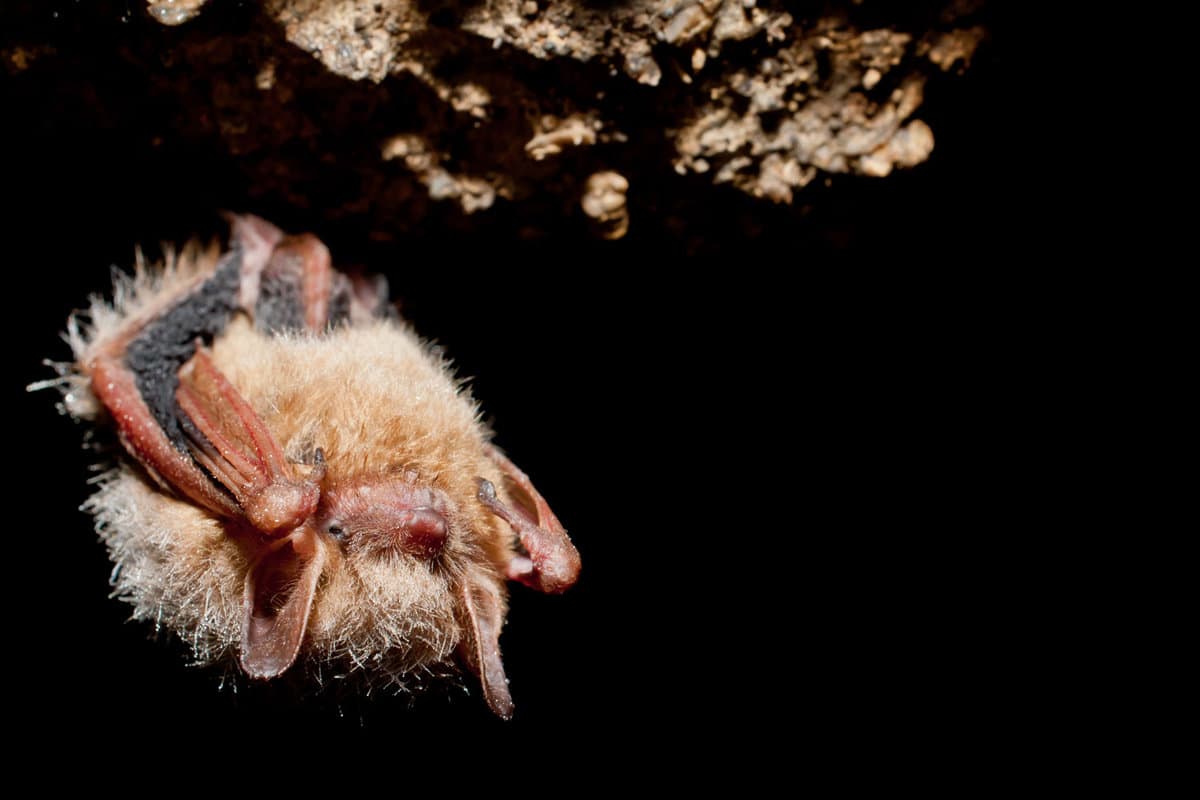Bats in Florida: Ever wonder how many types call this state home? Florida isn't just about beaches and theme parks.
It's also a haven for some of the most fascinating winged creatures of the night.
From the vast bat houses in Gainesville to the unique habitats in the Keys, this article will take you on a journey through Florida's bat world.
Get ready to discover where to find them, why they matter, and the best times to see them. Dive in, and let's explore together!
Florida's Bat Hotspots
Ever thought of Florida as a bat hotspot? Think again! This state boasts 13 unique bat species, each with its own story.
Whether you're near the bustling University of Florida Bat Houses in Gainesville or the tranquil Corkscrew Swamp Sanctuary in Naples, you're in for a treat.
Adventure awaits as you discover the perfect locations to witness these winged wonders up close.
Ready to begin your bat-watching journey? Let's go!
University of Florida

The University of Florida is home to one of the largest bat houses in the world, which can house up to 300,000 bats. Visitors can watch the bats emerge from the house at sunset, which is spectacular.
There are benches along the fence line on Museum Road and across the street near Lake Alice, where you can sit and watch the bats. The best time to visit is when the bats are most active in the fall.
Museum Road
Museum Road is another great location to see bats in Florida. The area is known for its large bat population; visitors can watch the bats fly overhead at dusk.
There are benches along the fence line where you can sit and observe the bats. Remember that temperatures can drop quickly after sunset, so bring a jacket or sweater.
Florida Keys

The Florida Keys are home to several species of bats, including the endangered Florida bonneted bat. Visitors can take a guided tour to see the bats up close and learn about their habitat and behavior.
Note that some tours require a donation, so be sure to check ahead of time. Also, some tours may not allow pets.
Bat Habitats in Florida
Here are some of the most common places to spot bats in Florida:
Caves

While Florida is not known for its extensive cave systems, there are a few places where you can see bats roosting in caves.
One of the best places to go is Florida Caverns State Park in the northern part of the state. Unlike bats up north, Florida bats do not hibernate in caves during the winter.
Instead, they lower their body temperature and heart rate and go into what is referred to as torpor to save energy on cold or rainy nights.
Also read: Visiting Florida Caverns: A Must-See Underground Adventure
Buildings
Bats roost in buildings, particularly those with crevices and other small openings. If you have a bat colony in your house, it is important to exclude them humanely.
The Florida Bat Conservancy provides step-by-step instructions for excluding a bat colony from a building on their website.
Also read: This Florida hidden gem has lions, tigers and a real castle: Arcadia, FL Guide
Bridges

Bridges are another common place to find bats in Florida. The Florida Fish and Wildlife Conservation Commission recommends leaving bridges with bat colonies alone, as they provide important roosting habitat for these animals.
Spanish Moss

Spanish moss is a common sight in Florida, and it is also a favorite roosting spot for some bat species. They will roost in the loose bark of trees, particularly those with a lot of Spanish moss.
Pine Trees

Pine trees are also a popular roosting spot for bats in Florida. They will roost in the bark crevices or under the loose bark of the trees.
Abandoned Buildings
Abandoned buildings are another common place to find bat colonies in Florida. These buildings provide ample roosting space for bats, and they are often undisturbed by humans.
Palm Trees
Some bat species in Florida also roost in palm trees. They will roost in the fronds or under the bark of the trees.
What is the best time of year to see bats in Florida?
Florida is home to a diverse array of bat species, many of which can be seen throughout the year.
However, the best time to see bats in Florida is during the summer months, between April 15 and August 15. This is when most bats in Florida reproduce and raise their young, making them more active and visible.
Types of Bats in Florida
Florida has diverse bat species, each with unique characteristics and habitats. Here are some of the different types of bats that can be found in Florida:
Evening Bat

The Evening Bat (Nycticeius humeralis) is a small bat that can be found in forests, swamps, and urban areas throughout Florida. They are known for their distinctive high-pitched calls and are often seen darting between trees at dusk.
Seminole Bat
The Seminole Bat (Lasiurus seminolus) is a medium-sized bat that can be found in pine forests and swamps throughout Florida. They are known for their reddish-brown fur and distinctive white-tipped ears.
Big Brown Bat

The Big Brown Bat (Eptesicus fuscus) is a larger-sized bat with a wingspan of around 12 inches. They are widespread throughout Florida and can be found in caves, tunnels, and other human structures.
Gray Myotis
The Gray Myotis (Myotis grisescens) is a small bat that can be found in caves and other underground habitats throughout Florida. They are known for their grayish-brown fur and distinctive pointed ears.
Brazilian Free-tailed Bat

The Brazilian Free-tailed Bat (Tadarida brasiliensis) is a medium-sized bat that can be found in caves and other structures throughout Florida. They are known for their distinctive long tails and often fly in large groups at dusk.
Florida Bonneted Bat

The Florida Bonneted Bat (Eumops floridanus) is a rare and endangered species that can be found in southern Florida. They are known for their distinctive large ears and often roost in palm trees.
Southeastern Myotis

The Southeastern Myotis (Myotis austroriparius) is a small bat that can be found in swamps, forests, and other habitats throughout Florida. They are known for their brownish-gray fur and distinctive pointed ears.
Tricolored Bat

The Tricolored Bat (Perimyotis subflavus) is a small bat that can be found in forests and other habitats throughout Florida. They are known for their distinctive three-colored fur and are often seen darting between trees at dusk.
Northern Yellow Bat
The Northern Yellow Bat (Lasiurus borealis) is a medium-sized bat that can be found in forests and other habitats throughout Florida. They are known for their bright yellow fur and distinctive white-tipped ears.
Velvety Free-tailed Bat

The Velvety Free-tailed Bat (Molossus molossus) is a small bat that can be found in caves and other structures throughout Florida. They are known for their distinctive velvety fur and are often seen flying in large groups at dusk.
Eastern Red Bat

The Eastern Red Bat (Lasiurus borealis) is a medium-sized bat that can be found in forests and other habitats throughout Florida. They are known for their bright red fur and often roost in trees during the day.
Hoary Bat
The Hoary Bat (Lasiurus cinereus) is a larger bat found in forests and other habitats throughout Florida. They are known for their distinctive frosted fur and often fly high in the sky at dusk.
Understanding Bat Behavior
Beyond their swift flight at dusk and their iconic roosting habits, Florida's bats lead intricate lives, rich with unique behaviors and interactions.
Diet: Most of Florida's bats feed primarily on insects. One bat can consume up to half its body weight in insects in a single night, making them essential for natural pest control.
Some species even feed on nectar, aiding in pollination and ensuring the balance of the ecosystem.
Communication: Bats are highly social animals. They communicate through various vocalizations, echolocation calls, and even body gestures.
Each call has its purpose, whether to locate food, navigate their environment, or interact with other bats.
Interactions: In their roosts, bats can be quite sociable. They form varying-sized colonies, from a handful to hundreds of thousands, especially in places like the University of Florida Bat Houses.
These colonies can be maternal, where females group to raise their pups or mixed with both male and female bats. Their social interactions include grooming one another, sharing food, or even squabbling over the best roosting spots.
By understanding these aspects of bat behavior, you'll gain a deeper appreciation when you spot them, whether at the Corkscrew Swamp Sanctuary in Naples or any other bat-watching location in Florida.
Conserving Bats in Florida

Florida has 13 native bat species and 7 "accidental" species.
Bats are ecologically and economically beneficial and essential in controlling mosquito populations and pollinating plants.
However, bat populations are declining due to habitat loss, disease, and human disturbance.
While watching bats can be a fun and educational experience, respecting their habitat and behavior is important.
In Conclusion: Embracing Florida's Nighttime Flyers
Bats are often overlooked or misunderstood, essential to Florida's rich biodiversity. Their nightly aerial dances remind us of nature's wonders in our backyards.
By understanding their habits, habitats, and crucial roles in the ecosystem, we can better appreciate and protect these fascinating creatures.
So, the next time dusk settles over the Sunshine State, take a moment to look up and marvel at the silent symphony of bats taking flight.
Your newfound knowledge will undoubtedly enhance the experience.
Also read: Is Florida Safe To Visit?
